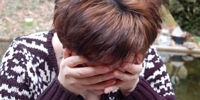Many teens try alcohol, tobacco, or drugs, but using these substances is not safe or legal. Some teens try these substances only a few times and stop. Others can't control their urges or cravings for them. This is substance abuse.
There are many types of drugs at the disposal of teenagers. Drug abuse among teenagers occur in schools, in social situations, (parties, raves, concerts, sporting events) at home, and out in the streets.
Virtually every drug that is abused by adults is also abused by adolescents. In addition toalcohol, common categories ofdrugs of abuseinclude:
Inhalants such as glues, aerosol sprays, gasoline, paints, and paint thinners. They are known by such street names as huffing, sniffing and wanging Inhalants are one of the substances most frequently abused by high school students because they are relatively cheap and readily available. These substances are extremely dangerous because they contain poisonous materials, such as lead and toluene, which can cause brain damage or, in rare cases, even death with the first use.
Club drugs, this term refers to drugs being used by teens and young adults at all-night dance parties such as "raves" or "trances," dance clubs, and bars. MDMA (Ecstasy), GHB, Rohypnol (Rophies), ketamine, methamphetamine, and LSD are some of the club or party drugs gaining popularity. Because some club drugs are colorless, tasteless, and odorless, they can be added unobtrusively to beverages by individuals who want to intoxicate or sedate others. In recent years, there has been an increase in reports of club drugs used to commit sexual assaults.
Methamphetamine, commonly referred to as meth, crank, or speed. Methamphetamine is highly addictive. In addition, it can cause seizures, stroke, serious mental problems, including paranoia, hallucinations, and delusions.
Hallucinogens, including LSD (lysergic acid diethylamide), mescaline, psilocybin, PCP (phencyclidine), and ketamine. Serious and lasting psychiatric conditions such as psychosis or hallucinogenic flashbacks can develop after using LSD.
Opiates, such as heroin, morphine, and codeine. Use of opiates can lead to strong physical and psychological addiction. Heroin has also been appearing in more affluent communities.
Prescription drugs, such as diazepam (for example, Valium), methylphenidate (Ritalin), hydrocodone bitartrate and acetaminophen (Vicodin), and oxycodone (OxyContin). Nonprescription medicines, such as cough syrups or cold pills, are also abused by teens.



